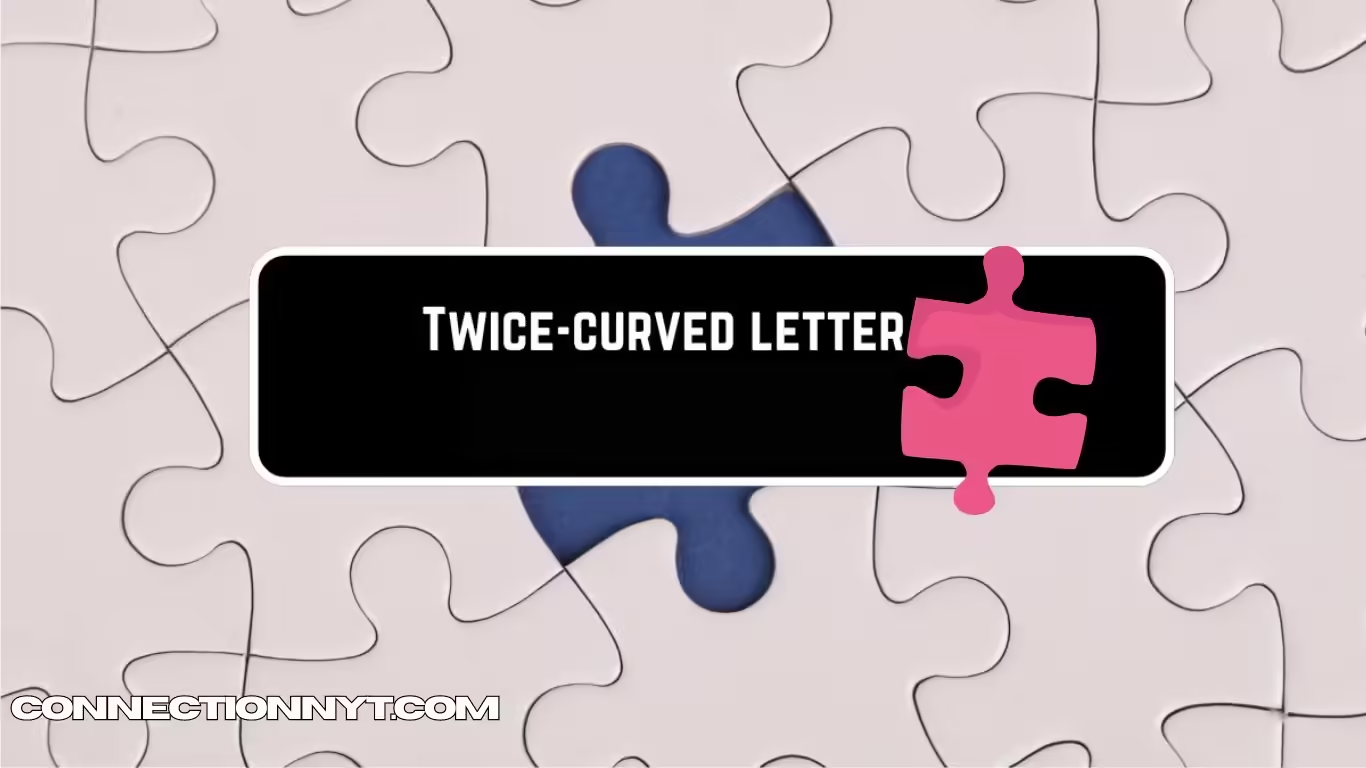Twice Curved Letter : The Ultimate Guide to Understanding, Designing, and Applying This Unique Typographic Element
Twice curved letters, often referred to as double curved letters, represent a fascinating and intricate aspect of typography and design. Their unique structure, involving curves in multiple planes, makes them a visually compelling element that can transform the aesthetics and functionality of various design projects. In this comprehensive guide, we will explore what twice curved letters are, their importance in design, the techniques used to create them, and how they are applied across different industries.
Table of Contents
What is a Twice Curved Letter?
Definition and Concept
A twice curved letter is a type of letterform that includes two distinct curves, often in different directions or planes. Unlike single curved letters, which feature a simple, singular curve, twice curved letters exhibit a more complex design, curving in two or more directions. These curves can be horizontal, vertical, diagonal, or a combination of these, depending on the specific letter and the design approach.
Twice curved letters are typically found in certain fonts and typefaces where the designer aims to create a sense of movement, fluidity, or sophistication. Their complex shapes often make them stand out, adding a unique visual element to any text.
Examples of Twice Curved Letters
Several letters in the English alphabet naturally fall into the category of twice curved letters. Here are some of the most common examples:
- S: Perhaps the most iconic example, the letter S curves in opposing directions, creating a serpentine or wave-like shape.
- B: This letter features two distinct curves—one in the upper lobe and one in the lower lobe—creating a balanced and symmetrical form.
- R: The R combines a curved loop and a straight leg, creating a dynamic and balanced shape.
- D: The letter D has a single straight line and a large curve, making it a simple yet effective example of a twice curved letter.
These letters are often emphasized in typography due to their aesthetic appeal and their ability to convey certain emotions or characteristics.
Importance of Twice Curved Letters in Design

Aesthetic Appeal
Twice curved letters are a key element in creating visually engaging and aesthetically pleasing text. Their complex shapes can introduce a sense of elegance, fluidity, or motion to a design. This makes them particularly appealing in decorative fonts and artistic designs where the visual impact of the text is paramount.
Designers frequently use twice curved letters in logos, headlines, and other prominent text elements to draw attention and create a strong visual hierarchy. The curves in these letters can guide the viewer’s eye, creating a natural flow that enhances the overall composition of the design.
Readability and Legibility
While twice curved letters can be striking and attractive, their design must also consider readability. If the curves are too extreme or unbalanced, they can make the text difficult to read, particularly in smaller sizes or longer passages of text. This is why designers need to carefully balance the aesthetic qualities of twice curved letters with their functional readability.
In typefaces intended for body text, twice curved letters are often simplified or stylized to ensure that they remain legible without sacrificing their visual appeal. In contrast, display typefaces, which are intended for use in larger sizes, may feature more elaborate curves to maximize their aesthetic impact.
Branding and Identity
The choice of typography, including the use of twice curved letters, plays a significant role in branding and identity design. Fonts that include twice curved letters can convey a variety of messages depending on how they are used. For example:
- Elegance and Sophistication: Brands that want to project an image of luxury or high-end products may use twice curved letters to create a refined and sophisticated look.
- Playfulness and Creativity: The dynamic shapes of twice curved letters can also be used to convey a sense of playfulness or creativity, making them a good choice for brands that want to appear fun and approachable.
- Modernity and Innovation: The complexity and uniqueness of twice curved letters can suggest modernity and innovation, making them suitable for tech companies and other forward-thinking brands.
Emotional Impact
Beyond their aesthetic and functional roles, twice curved letters can also have a powerful emotional impact. The curves in these letters can evoke a sense of warmth, approachability, and friendliness, making them particularly effective in designs intended to connect with viewers on an emotional level.
In contrast, sharper, more angular letters can convey a sense of strength, stability, or aggression. By carefully choosing and designing twice curved letters, designers can tailor the emotional tone of a design to match the intended message or brand identity.
Historical Context and Evolution of Twice Curved Letters
Origins in Calligraphy
The concept of twice curved letters can be traced back to ancient calligraphy, where scribes used curved strokes to create flowing, elegant scripts. In scripts like the Uncial or Carolingian minuscule, curves were essential for creating readable, aesthetically pleasing text. The evolution of these scripts laid the foundation for the development of more complex letterforms, including twice curved letters.
Influence of Typography Movements
Throughout the history of typography, various movements have influenced the design and use of twice curved letters. For example:
- Art Nouveau: In the late 19th and early 20th centuries, the Art Nouveau movement embraced organic shapes and flowing lines, leading to the creation of typefaces with exaggerated curves and ornamental details.
- Bauhaus: In contrast, the Bauhaus movement of the 1920s emphasized functional, geometric design, leading to a more restrained use of curves in typography. However, even within this movement, twice curved letters were used strategically to create balance and visual interest.
Modern Applications
In contemporary design, twice curved letters continue to play a vital role. With the advent of digital typography, designers have more tools and flexibility than ever to create and manipulate these letterforms. Today, twice curved letters are found in a wide range of applications, from corporate branding to web design and digital media.
Designing Twice Curved Letters: Techniques and Best Practices

Tools and Software for Designing Twice Curved Letters
Designing twice curved letters requires precision and creativity, and the right tools can make a significant difference. Here are some of the most commonly used tools and software for creating these intricate letterforms:
- Adobe Illustrator: A vector-based design software, Adobe Illustrator is widely used for creating custom letterforms, including twice curved letters. Its Pen Tool and Bézier curves allow designers to create smooth, precise curves that can be easily manipulated and adjusted.
- CorelDRAW: Another popular vector design tool, CorelDRAW offers similar features to Illustrator, making it a viable option for designing twice curved letters.
- FontForge: For those looking to create entire typefaces, FontForge is an open-source font editor that allows for the creation and editing of custom fonts, including the fine-tuning of twice curved letters.
Techniques for Creating Balanced and Harmonious Twice Curved Letters
When designing twice curved letters, it’s essential to ensure that the curves are balanced and harmonious. Here are some techniques to achieve this:
- Bézier Curves: Bézier curves are mathematical curves that can be precisely controlled using anchor points and handles. They are the foundation of most vector-based design tools and are essential for creating smooth, balanced curves.
- Symmetry and Proportion: Maintaining symmetry and proportion is key to creating visually pleasing twice curved letters. This can involve ensuring that curves are mirrored across an axis or that the thickness of strokes remains consistent throughout the letterform.
- Flow and Continuity: The flow and continuity of curves are also important. Designers should strive to create curves that transition smoothly from one part of the letter to another, avoiding any abrupt changes in direction or thickness.
- Experimentation and Iteration: Designing twice curved letters often involves a process of experimentation and iteration. Designers may need to create multiple versions of a letterform, adjusting the curves and proportions until they achieve the desired balance and harmony.
Common Challenges in Designing Twice Curved Letters
Designing twice curved letters comes with its own set of challenges. Some of the most common include:
- Maintaining Readability: As mentioned earlier, readability can be a concern with twice curved letters, particularly in smaller sizes or longer passages of text. Designers must strike a balance between creating visually interesting curves and maintaining legibility.
- Avoiding Over-Design: It can be tempting to over-design twice curved letters, adding too many curves or details. However, this can lead to cluttered, confusing letterforms that detract from the overall design.
- Ensuring Consistency Across a Typeface: When designing an entire typeface that includes twice curved letters, maintaining consistency across all the letters can be challenging. This involves ensuring that the style, thickness, and flow of curves are consistent throughout the typeface.
Applications of Twice Curved Letters in Various Industries
Typography and Graphic Design
In the fields of typography and graphic design, twice curved letters are used in a variety of ways to enhance the visual appeal and effectiveness of text. Some common applications include:
- Logos and Branding: Logos are often the most visible representation of a brand, and twice curved letters can play a crucial role in making them memorable and impactful. Brands like Coca-Cola and Disney have famously used twice curved letters to create logos that are instantly recognizable and timeless.
- Posters and Advertisements: In advertising, the goal is often to capture the viewer’s attention quickly and effectively. Twice curved letters can help achieve this by creating dynamic, eye-catching headlines and text that stand out from the competition.
- Web Design and Digital Media: In the digital age, twice curved letters are increasingly used in web design and digital media. Whether in website headers, call-to-action buttons, or digital advertisements, these letters can add personality and visual interest to online content.
Twice curved letters are not limited to two-dimensional design. In architectural contexts, they are often used in signage and building facades to create striking visual statements. The physical manifestation of these curves can add depth, texture, and a sense of movement to architectural elements, making buildings and spaces more dynamic and engaging.
Signage
Architectural signage often employs twice curved letters to make a lasting impression. These letters are commonly found in:
- Storefronts: Retailers use twice curved letters in their storefronts to create distinctive and inviting signage that attracts customers.
- Monument Signs: For corporate headquarters, educational institutions, and public spaces, twice curved letters can be used in large-scale monument signs to convey authority and permanence while maintaining a visually appealing design.
- Wayfinding Systems: In complex environments like airports, malls, or campuses, twice curved letters can be used in wayfinding systems to guide visitors. The curves can make the signs more readable and visually interesting, enhancing the overall user experience.
Facades and Architectural Details
In modern architecture, twice curved letters may be integrated into the very structure of buildings, appearing in:
- Exterior Facades: Designers may incorporate twice curved letters into the facades of buildings as decorative elements. These letters can be created from various materials, such as metal, glass, or stone, and can be either subtle or prominent, depending on the design intent.
- Interior Design Elements: Inside buildings, twice curved letters can appear in wall decorations, floor designs, or even as part of furniture and fixtures. These elements can help reinforce a brand’s identity or contribute to the thematic design of a space.
Calligraphy and Hand Lettering
Calligraphy and hand lettering are art forms that celebrate the beauty and fluidity of the written word. Twice curved letters are central to many calligraphic styles, where the emphasis is on creating flowing, harmonious letterforms.
Traditional Calligraphy
In traditional calligraphy, twice curved letters are often found in scripts such as:
- Spencerian Script: This elegant script, popular in the 19th century, relies heavily on the graceful, flowing curves of twice curved letters. It is characterized by its thin, delicate lines and smooth transitions between curves.
- Copperplate Script: Copperplate script is another calligraphic style that utilizes twice curved letters to create formal, refined text. This script is known for its strong contrast between thick and thin strokes, achieved by varying pressure on the pen.
Modern Hand Lettering
In the realm of modern hand lettering, artists experiment with twice curved letters to create unique, personalized designs. These letters can be used in everything from wedding invitations and greeting cards to murals and digital art. Hand lettering artists often push the boundaries of traditional letterforms, playing with the size, shape, and orientation of curves to create innovative and eye-catching designs.
Fashion and Textile Design
Twice curved letters also find their place in the fashion and textile industry, where they are used in:
- Logo Embroidery: Fashion brands often use twice curved letters in embroidered logos on clothing and accessories. The curves add a level of sophistication and luxury to the branding, making it more appealing to consumers.
- Pattern Design: Textile designers may incorporate twice curved letters into fabric patterns. These letters can be repeated to create intricate, flowing designs that add depth and texture to fabrics used in clothing, upholstery, and other textile products.
- Prints and Graphics: In the world of fashion, twice curved letters are also popular in prints and graphics on t-shirts, jackets, and other apparel. The curves can make these designs more dynamic and visually interesting, appealing to consumers who value unique and stylish clothing.
Education and Instructional Design
Twice curved letters are not only a visual element but also play a role in educational contexts, particularly in teaching typography, design, and handwriting.
Typography and Design Education
In design schools and typography courses, students often study twice curved letters to understand the complexities of letterform design. These letters serve as examples of how curves can be used to create balance, harmony, and visual interest in typography.
- Assignments and Projects: Students may be tasked with designing their own twice curved letters or creating typefaces that incorporate these letterforms. This process helps them develop their skills in vector design, symmetry, and aesthetic judgment.
- Historical Studies: Understanding the historical evolution of twice curved letters is also a key component of typography education. Students learn how different design movements and cultural shifts have influenced the development of these letterforms over time.
Handwriting Instruction
In handwriting instruction, particularly in early education, twice curved letters are often a focus as students learn to write. Teachers emphasize the importance of forming curves correctly to ensure that the letters are legible and aesthetically pleasing.
- Practice Sheets: Students use practice sheets with twice curved letters to develop their motor skills and learn the proper formation of these letters. The repetitive practice helps them internalize the shapes and flow of the letters.
- Creative Exercises: In more advanced stages, students may be encouraged to experiment with twice curved letters, creating their own decorative versions as a way to express creativity and develop their handwriting style.
The Future of Twice Curved Letters in Design

As design trends continue to evolve, the use of twice curved letters is likely to grow and adapt to new technologies and creative possibilities. Several emerging trends and innovations are shaping the future of these letterforms.
Variable Fonts and Responsive Typography
One of the most exciting developments in typography is the rise of variable fonts and responsive typography. Variable fonts allow designers to adjust the weight, width, and other characteristics of a typeface in real-time, creating dynamic text that can adapt to different screen sizes and contexts.
- Adaptive Curves: In variable fonts, twice curved letters can be designed to adapt their curves based on the specific needs of a design. For example, a letter might become more condensed or expanded depending on the available space, all while maintaining its characteristic curves.
- Responsive Design: Responsive typography ensures that twice curved letters remain legible and aesthetically pleasing across different devices, from smartphones to large desktop monitors. This adaptability is crucial as more content is consumed on various screens.
3D Typography and Augmented Reality
The integration of 3D typography and augmented reality (AR) into design opens new possibilities for twice curved letters. These technologies allow designers to create letterforms that exist in three-dimensional space, adding depth and interactivity to text.
- 3D Letterforms: In 3D typography, twice curved letters can be extruded, rotated, and manipulated in space to create complex, dynamic shapes. This can be particularly effective in virtual environments, video games, and digital installations.
- Augmented Reality Applications: In AR, twice curved letters can be superimposed onto real-world environments, creating interactive experiences where users can explore and engage with the text. This technology is already being used in advertising, education, and entertainment, with twice curved letters adding a touch of elegance and sophistication to these experiences.
Sustainable Design Practices
As sustainability becomes a priority in design, twice curved letters can play a role in creating more environmentally friendly typography and branding.
- Eco-Friendly Materials: In physical applications like signage and packaging, twice curved letters can be crafted from sustainable materials, reducing the environmental impact of branding efforts.
- Minimalist Design: The minimalist design trend, which emphasizes simplicity and functionality, can also influence the use of twice curved letters. By stripping away unnecessary details, designers can create elegant, twice curved letterforms that are both visually appealing and resource-efficient.
Conclusion
Twice curved letters are a unique and versatile element in typography and design, offering endless possibilities for creativity and expression. From their origins in calligraphy to their modern applications in digital media, architecture, and fashion, these letterforms have evolved to meet the changing needs of designers and audiences alike.
As you explore the world of twice curved letters, consider how their curves can enhance your designs, whether you’re creating a logo, crafting a piece of architecture, or designing the next big thing in digital typography. By understanding the principles behind these letterforms and staying ahead of emerging trends, you can harness the power of twice curved letters to create designs that are not only beautiful but also meaningful and impactful.






